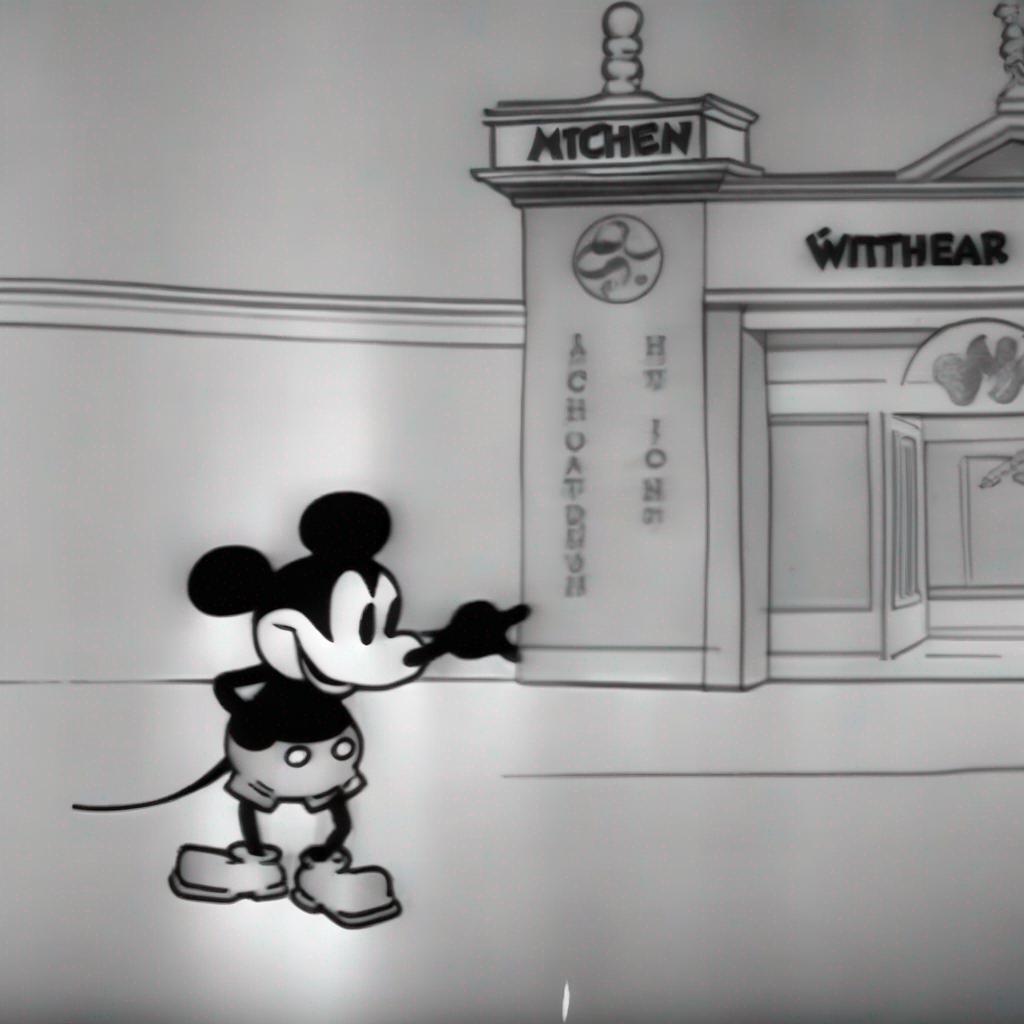Mickey Steams Towards the Public Domain

DisCo is taking part in Copyright Week, a series of actions and discussions supporting key principles that should guide copyright policy. This week, various groups are taking on elements of copyright law and policy, addressing what’s at stake and what we need to do to make sure that copyright promotes creativity and innovation.
While this post’s title refers to Mickey Mouse entering the public domain, that is not exactly the case. This year marks the expiration of Disney’s copyright on the cartoon character starring in Disney’s 1928 animated short “Steamboat Willie,” an earlier incarnation of what has now become the company’s most noteworthy and lovable mascot, Mickey Mouse.
Copyright protects certain works from being copied without the permission of the work’s creator and copyright holder, subject to exceptions such as “fair use.” The U.S. Copyright Act grants the author or creator a bundle of rights concerning that creative work often for their life plus 70 years following. Although life plus 70 is a long time, it is not forever, which means that famous works, such as Mickey Mouse’s progenitor, who we’ll refer to as “Steamboat Willie,” eventually enter the public domain.
Steamboat Willie shares some physical qualities with the Mickey we know today, however, these works are distinct from each other and newer versions of Mickey Mouse remain under copyright. Thus, while Steamboat Willie is in the public domain, Mickey Mouse is not. This means that people can creatively reuse only the Mickey Mouse from “Steamboat Willie,” and not the Mickey Mouse from more recent Disney works.
With Steamboat Willie now in the public domain, anyone can copy and reproduce that version of Mickey Mouse. That opens the door for a myriad of creative uses for the character, who joins the ranks of other notable characters such as Sherlock Holmes and Winnie the Pooh, the latter of which has even seen a more macabre take on the character. In the coming years, Steamboat Willie will feature in multiple films (The Return of Steamboat Willie and Mickey’s Mouse Trap) and video games (Mouse and Infestation: Origins). The concerns arise when a work based off of Steamboat Willie isn’t distinct enough from the current Mickey Mouse copyright or a use of Steamboat Willie could confuse or mislead consumers into thinking the new creative works are officially associated with Disney, which would then infringe upon Disney’s trademark of Mickey Mouse. Creators are free to copy, share, and build upon Steamboat Willie, but the creation cannot use any copyrighted versions of Mickey Mouse or breach the trademark. Disney has a unique relationship with copyright and the public domain, depicted by the history of Disney’s many creations, Mickey included.
While there are challenging circumstances in this case, they are not holding creators back from using Steamboat Willie in their works. Even though it has only recently entered into the public domain (and sits in a complex position), Steamboat Willie is already being used in unique and innovative new ways such as training an AI model that can generate images of Mickey and Minnie using stills from 1928 (the image for this post came from that model). Uses such as this speak to the range of creative expression individuals can pursue with works in the public domain. The public domain serves as a crucial resource for knowledge, innovation, and creativity, where creators of all sizes can preserve the valuable works of the past, add to the future of these works, utilize these works as inspiration for original ideas, and more. It provides the democratization of highly successful and universally known creative works, allowing creators of all sizes the opportunities that such beloved works bring. We are entering an interesting time since many larger than life creations, such as Mickey, are the first of what will be a long stream of still popular cultural icons that become public domain each year. What people will do with these iconic works when they’re in the public domain – whether they are used to create books, movies, songs, art, video games, cartoons, or more – is exciting to imagine; the sky’s the limit.








